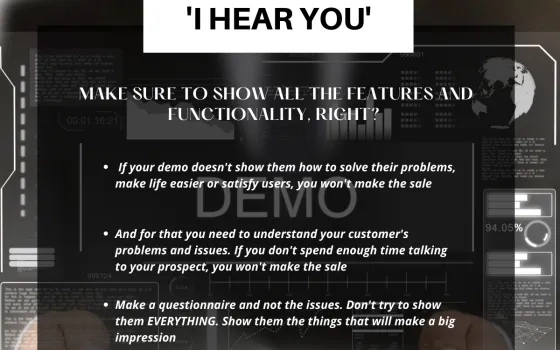In the competitive landscape of today's business world, having an efficient marketing strategy is not just beneficial—it's essential. Companies that neglect to implement effective marketing strategies often find themselves struggling to survive. Here are the top five reasons why companies fail without efficient marketing strategies, along with detailed insights into each reason, corrective approaches, expert tips, best practices, and recommended tools.
1. Lack of Brand Awareness
Reason: Brand awareness is the foundation of any successful business. Without it, potential customers may not even know that a company exists. This lack of visibility leads to missed opportunities and can prevent a business from gaining traction in the market.
Correct Approach: To build brand awareness, companies need to invest in a mix of traditional and digital marketing efforts. This includes social media marketing, content marketing, public relations, and advertising.
Expert Tips:
- Consistency is Key: Ensure that your brand messaging is consistent across all channels. This helps in creating a recognizable brand image.
- Engage on Social Media: Platforms like Facebook, Instagram, and LinkedIn are powerful tools for increasing brand visibility. Regularly post content that is engaging and relevant to your audience.
Best Practices:
- Content Marketing: Create high-quality content that addresses the needs and interests of your target audience. This could be in the form of blogs, videos, infographics, or podcasts.
- SEO Optimization: Optimize your website and content for search engines to increase organic traffic. Tools like Ahrefs and SEMrush can help identify relevant keywords and track your SEO performance.
Tools:
- Canva: For creating visually appealing graphics and social media posts.
- Hootsuite: To manage and schedule social media posts across different platforms.
- Google Analytics: For tracking website traffic and understanding user behavior.
2. Poor Customer Engagement
Reason: Customer engagement is critical for building relationships and fostering loyalty. Companies that fail to engage with their customers often see lower customer retention rates and decreased brand loyalty.
Correct Approach: Implement strategies that prioritize customer interactions and foster a sense of community around your brand. This can be achieved through personalized communication, responsive customer service, and community-building initiatives.
Expert Tips:
- Personalization: Use customer data to personalize your marketing efforts. Personalized emails and recommendations can significantly enhance customer experience.
- Responsive Support: Ensure that your customer service team is responsive and helpful. Use tools like Zendesk to manage customer inquiries efficiently.
Best Practices:
- Email Marketing: Regularly send out newsletters and updates that provide value to your customers. Use segmentation to ensure that the content is relevant to each recipient.
- Social Media Interaction: Actively engage with your audience on social media by responding to comments, messages, and mentions.
Tools:
- Mailchimp: For creating and managing email marketing campaigns.
- Intercom: For real-time customer support and engagement.
- Sprout Social: For social media management and engagement analytics.
3. Ineffective Targeting
Reason: Without efficient targeting, marketing efforts can be wasted on an audience that is not interested in the product or service. This inefficiency leads to lower conversion rates and a higher cost of customer acquisition.
Correct Approach: Utilize data-driven marketing strategies to identify and target your ideal customer segments. This involves analyzing demographic, psychographic, and behavioral data to create detailed buyer personas.
Expert Tips:
- Market Research: Conduct thorough market research to understand your target audience's needs and preferences. Use surveys, focus groups, and competitor analysis to gather insights.
- Behavioral Targeting: Track user behavior on your website to understand their interests and preferences. Tools like Hotjar can provide valuable insights into user behavior.
Best Practices:
- Segmented Campaigns: Create targeted marketing campaigns for different customer segments. This ensures that the messaging is relevant and resonates with the audience.
- A/B Testing: Regularly test different marketing strategies to see what works best. This could include testing different ad creatives, email subject lines, or landing page designs.
Tools:
- Google Analytics: For analyzing website traffic and user behavior.
- HubSpot: For creating and managing detailed customer personas.
- SurveyMonkey: For conducting market research and gathering customer feedback.
4. Inconsistent Brand Messaging
Reason: Inconsistent brand messaging can confuse potential customers and dilute the brand's identity. It can lead to mixed perceptions and weaken the overall impact of marketing efforts.
Correct Approach: Develop a clear brand messaging framework that outlines your brand's voice, tone, and key messages. Ensure that all marketing communications align with this framework.
Expert Tips:
- Brand Guidelines: Create comprehensive brand guidelines that cover all aspects of your brand's visual and verbal identity. This includes logo usage, color schemes, typography, and tone of voice.
- Training: Train your marketing team on the importance of consistent messaging and how to apply the brand guidelines across different channels.
Best Practices:
- Content Calendar: Use a content calendar to plan and schedule your marketing activities. This helps ensure consistency in your messaging and timing.
- Cross-Channel Consistency: Maintain consistency across all marketing channels, including social media, email, website, and offline materials.
Tools:
- CoSchedule: For planning and managing your content calendar.
- Trello: For organizing marketing projects and ensuring team collaboration.
- Adobe Creative Cloud: For creating consistent visual content that aligns with your brand guidelines.
5. Lack of Data-Driven Decision Making
Reason: Companies that do not utilize data to inform their marketing strategies are at a disadvantage. Without data-driven insights, it is challenging to understand what works and what doesn’t, leading to inefficient marketing spend and missed opportunities.
Correct Approach: Implement data-driven marketing practices by leveraging analytics and reporting tools. Continuously monitor and analyze the performance of your marketing campaigns to make informed decisions.
Expert Tips:
- KPI Tracking: Identify key performance indicators (KPIs) that align with your business goals. Regularly track these metrics to measure the success of your marketing efforts.
- Data Integration: Integrate data from various sources to get a holistic view of your marketing performance. This includes website analytics, social media metrics, and CRM data.
Best Practices:
- Regular Reporting: Create regular marketing performance reports to share with your team. Use these reports to identify trends, areas for improvement, and opportunities for optimization.
- Predictive Analytics: Use predictive analytics to forecast future marketing performance and identify potential growth areas. Tools like Salesforce Einstein can provide valuable predictive insights.
Tools:
- Google Analytics: For comprehensive website analytics and performance tracking.
- Tableau: For visualizing and analyzing complex data sets.
- Mixpanel: For advanced product and user analytics.
Conclusion
Efficient marketing strategies are crucial for the success of any business. Companies that fail to implement these strategies often struggle with brand awareness, customer engagement, targeting, consistent messaging, and data-driven decision-making. By adopting the correct approaches, utilizing expert tips, following best practices, and leveraging the right tools, businesses can overcome these challenges and thrive in the competitive market.
Embrace efficient marketing strategies to ensure your company’s growth and success. Start by understanding your audience, engaging with them effectively, targeting the right segments, maintaining consistent messaging, and making data-driven decisions. With these strategies in place, your business will be well-positioned to achieve its marketing goals and drive long-term success.





























